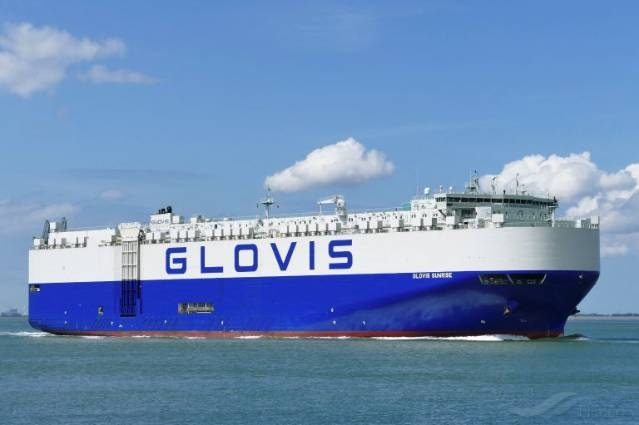Hyundai Glovis, the shipping and logistics arm of South Korean automotive giant Hyundai Motor Group, will spend $750 million to continue construction of the world’s largest liquefied natural gas (LNG)-powered dual-fuel PCTC (pure car and track carrier).

Hyundai Glovis plans to invest another 1.0275 trillion won (about $750 million) in six new 10,800 CEU LNG dual-fuel powered PCTCs, according to Yonhap News Agency, South Korea’s Chosun Ilbo and other news sources on April 25. The new shipbuildings are expected to be delivered on December 31, 2028, at a cost of approximately $125 million per unit. The company first announced the 10,800 CEU LNG dual-fuel powered PCTC shipbuilding project in 2023, and its investment plan was approved on October 26, 2023.
Hyundai Glovis said the continued investment in LNG dual-fuel powered PCTCs will help stabilize the company’s fleet in the medium to long term and achieve its 2045 Carbon Neutral Roadmap, as well as responding to the trend of tightening international environmental regulations. The investment program means that the company will be able to provide more reliable shipping services to strategic shippers around the world in the medium to long term.
Hyundai Glovis has not yet disclosed the shipyards for the six proposed vessels at this stage, and it is not yet known whether the company will continue to place orders with Chinese shipyards as usual. To date, Hyundai Glovis has placed orders for a number of 10,800 CEU LNG dual-fuel PCTCs with Shanghai Waigaoqiao Shipbuilding (SWS) and Guangzhou Shipbuilding International (GSI), both of which are part of the China State Shipbuilding Corporation (CSSC).
During Marintec China 2023, Hyundai Glovis selected Seaspan Corporation and Korea’s largest shipping company, HMM SHIPPING AGENCY (HMM, formerly Hyundai Merchant Marine), as shipowners, to sign contracts with SWS and GSI for the construction of 6+4 10,800 CEU LNG dual-fuel powered PCTCs, respectively, which are expected to be delivered from 2026 to 2027. It is the largest PCTC in the world to date.
According to the announcement made by CSSC on the evening of December 5, 2023, the total contract value of the first order of 12 confirmed vessels is about $1.46 billion ( about RMB 10.45 billion).In February 2024, Hyundai Glovis entered into force two 10,800 CEU LNG dual-fuel powered PCTCs at SWS and GSI, respectively, which are expected to be 2027 delivery, with a total value of approximately $488 million.

With the option order for 4 PCTCS in force, the number of 10,800 CEU LNG dual-fuel powered PCTCs ordered by Hyundai Glovis at Chinese shipyards has increased to 16, with a total value of US$1.948 billion.
It is understood that the world’s largest PCTC contracted by Hyundai Glovis is designed by Shanghai Ship Research and Design Institute (SDARI). The PCTC is equipped with 14 car decks, 5 of which are elevated or movable decks, providing excellent loading capacity for ultra-high and ultra-heavy ro-ro cargoes.
Among them, several car decks are suitable for loading new energy vehicles such as hydrogen vehicles, compressed liquefied natural gas (CLNG) vehicles, liquefied petroleum gas (LPG) vehicles, etc. Part of the decks are suitable for carrying packaged dangerous goods cargoes and reefer containers, which will greatly enhance the diversity and flexibility of cargo loading. In addition, the PCTC will adopt the design of ammonia fuel reservation and methanol fuel reservation, laying the technical feasibility for the future conversion to “carbon neutral” fuel.
On April 25, Hyundai Glovis officially released its first quarter 2024 annual report. The report shows that Hyundai Glovis exceeded market expectations for first quarter profits, achieving operating revenue of 6.5864 trillion won, up 4.5 % year-on-year; operating profit of 384.8 billion won, down 5.4 % year-on-year; and net profit of 306.2 billion won, up 7.9 % year-on-year. The company expects full-year operating revenue to be in the range of 26 trillion to 27 trillion won and operating profit to be in the range of 1.6 trillion to 1.7 trillion won, upwardly revised year-on-year.


